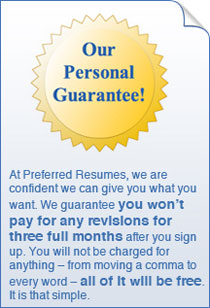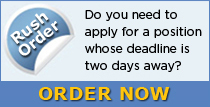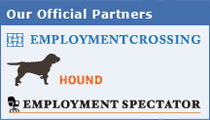Resume Do's and Don'ts and Resume Summary
|
|
DO
- Use parallel sentence structure.
- Punctuate your sentences correctly.
- Save capital letters for proper nouns.
- Spell out numbers where appropriate.
- Spell out abbreviations when they first appear.
- Check your spelling and grammar.
- Create visual interest by using short paragraphs, bullets, and white space.
- Use an 11 or 12 point font for text to ensure readability.
- Use a slightly larger font for headings so they stand out.
- Create a hierarchy of information.
- Use an attractive layout and high quality paper.
- Present yourself accurately and positively.
- Include a summary statement.
- Include your most relevant accomplishments.
- Quantify your accomplishments.
- Use action oriented words.
- Highlight responsibilities with bullets to emphasize your skills.
- Include your complete employment history or at least the last 10 years.
- Have someone else proofread your resume before it is printed.
- Overuse highlighting techniques such as bold and italics.
- Give the same weight to both a heading and a company name.
- Be unnecessarily wordy.
- Use "I," "me," "my," and "we."
- Underline. It clutters the page.
- Smudge your resume with fingerprints.
- Use long, complicated sentences, jargon, or "buzz words."
- Include your desired salary.
- Include references or even state that they are available on request.
- Bore your reader with too much information.
- Make your resume more than two pages.
- Is it interesting? Am I enjoying reading it?
- Is it clear and direct?
- Is it comprehensive of relevant information without being exhaustive?
- Is it accurate and honest?
- Does it "invite" the reader to find out more about me?
- Do my accomplishments support my career objective?
- Am I impressed?
- Would I hire the person on that resume?
The summary explains in a few lines who you are and summarizes your credentials, skills, and qualifications for particular positions or functions. The summary should be 3 to 6 fines long, highlighting your career to date. Begin with your generic title, years of experience, and industry. Then outline your strengths and skills. If your list of skills is longer than one paragraph, you may want to use a bulleted "key word" format. You may also wish to include any positive personal traits that reflect on your ability to get the job done as well as any pertinent achievements and awards. However, these last two items are optional.
Word your summary to convey both your objectives and your major skills and qualifications. Another way of broadly identifying where you could fit in to the potential employers company is to include keywords in your summary to suggest the positions and/or functions in which you are interested.
If you are in mid career or later, be wary of overemphasizing experience (e.g., "over 29 years of experience in tax management"). You could potentially convey a negative "age" message or that you have stayed in one place too long.
Example:
Proven engineering/maintenance manager widi extensive experience in directing facilities planning, building, and expansion projects ranging in scope from $50,000 to $9 million. Achieved a reputation for aggressively completing projects on time and within budget. Implemented and later computerized maintenance and calibration of manufacturing and facilities equipment/structures with an annual budget of $2 million.
Example:
Administrative support professional with 10 years of multi industry experience in Query Management Facilities (QMF/SQL) and Computerized Maintenance Management Systems (COMMS/CICS) supporting a sophisticated controlled/predictive maintenance work order system. Major strengths include organizing, planning, interpersonal skills, report writing, and training. Reputation as a team player and highly motivated self-starter.
Example:
Experienced project manager in the chemical industry, with achievements in design and manufacturing engineering. Background includes a Masters degree in Chemical Engineering from the University of Ottawa, as well as a 3 year assignment in corporate headquarters as a Staff Manufacturing Representative.
Since most resume screeners decide in a matter of seconds whether they will read more than a few lines of a resume, be sure that your summary matches the reader's needs and is interesting enough to warrant further review.




